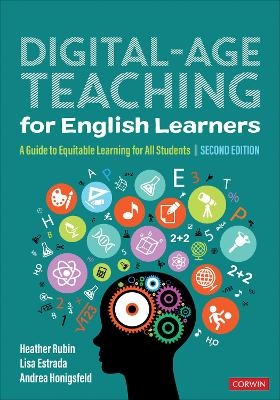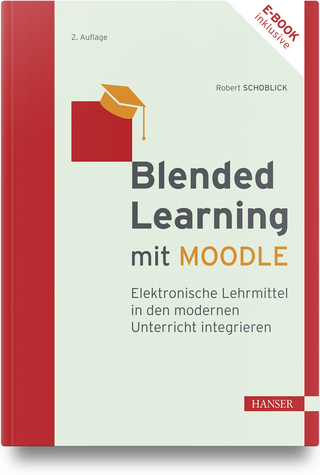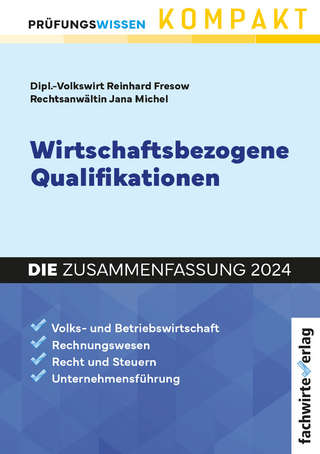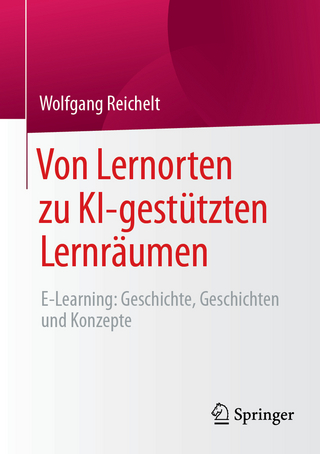
Digital-Age Teaching for English Learners
Corwin Press Inc (Verlag)
978-1-0718-2446-7 (ISBN)
Since the first edition of this bestselling resource many schools are still striving to close the digital divide and bridge the opportunity gap for historically marginalized students, including English learners. And the need for technology-infused lessons specifically aligned for English learners is even more critically needed.
Building from significant developments in education policy, research, and remote learning innovations, this newly revised edition offers unique ways to bridge the digital divide that disproportionally affects culturally and linguistically diverse learners. Designed to support equitable access to engaging and enriching digital-age education opportunities for English learners, this book includes
Research-informed and evidence-based technology integration models and instructional strategies
Sample lesson ideas, including learning targets for activating students’ prior knowledge while promoting engagement and collaboration
Tips for fostering collaborative practices with colleagues
Vignettes from educators incorporating technology in creative ways
Targeted questions to facilitate discussions about English language development methodology
Complete with supplementary tools and resources, this guide provides all of the methodology resources needed to bridge the digital divide and promote learning success for all students.
Heather Rubin is the Administrative Coordinator for the New York State Education Department’s Long Island Regional Bilingual Education Resource Network (LIRBERN) at Eastern Suffolk BOCES. She presents regularly at national and international conferences on topics related to instructional design and technology integration for English Learners and provides school districts with professional learning and guidance in order to support the needs of English Learners and their families. She has over 20 years of experience as a teacher, administrator, and education consultant. Her career as an ESOL professional began as a high school teacher for the NYC Board of Education and for Roosevelt UFSD in Long Island, NY. She has worked as an adjunct professor for Queens College, Molloy College Graduate School of Education, Hofstra University, and at Mercy College. Her combined expertise on ELs and the use of technology to support learning developed while working for the Board of Cooperative Educational Services of Nassau County (Nassau BOCES) where she was first an ESOL Program Specialist for the NYSED Bilingual/ESL Technical Assistance Center and then the Program Coordinator of Model Schools/Digital Age Teaching and Education. She holds a master of science in education degree for teaching English to speakers of other languages from Queens College, City University of New York, and a professional diploma in school district leadership from Fordham University. She co-authored ELL Frontiers Using Technology to Enhance Instruction for English Learners (2017), with Lisa Estrada and Dr. Andrea Honigsfeld, published by Corwin. She is also the co-contributor of Digital Age Teaching for English Learners in The Handbook of TESOL in K-12 (2019), a Wiley publication. Lisa Estrada is recently retired from her position as the Supervisor of English as a New Language, Bilingual Education, and World Language Programs at Hicksville Public Schools, Hicksville, New York. She was also an adjunct professor in the Molloy College Clinically-Rich Intensive Teacher Institute, Rockville Centre, New York. Her educational experience and training includes over 30 years of ESL and Bilingual Education in K–12 settings. She was the recipient of the 2020 Outstanding Long Island ESOL Administrator of the Year Award presented by the Long Island Professional Committee on ESOL Education. She co-authored ELL Frontiers Using Technology to Enhance Instruction for English Learners (2017), with Heather Parris and Dr. Andrea Honigsfeld, published by Corwin. She is also the co-contributor of Digital Age Teaching for English Learners in The Handbook of TESOL in K-12 (2019), a Wiley publication. Through her extensive knowledge of the education of ELs, she provides technical assistance and professional development on effective differentiated strategies, culturally responsive teaching, and technology integration for administrators and teachers working with English Learners. She conducts workshops and presents regularly at regional, national, and international conferences. Andrea Honigsfeld, EdD, is Professor in the School of Education at Molloy University, Rockville Centre, New York. Before entering the field of teacher education, she was an English-as-a-foreign-language teacher in Hungary (Grades 5–8 and adult) and an English-as-a-second-language teacher in New York City (Grades K–3 and adult). She also taught Hungarian at New York University. She was the recipient of a doctoral fellowship at St. John’s University, New York, where she conducted research on individualized instruction and learning styles. She has published extensively on working with English language learners and providing individualized instruction based on learning style preferences. She received a Fulbright Award to lecture in Iceland in the fall of 2002. In the past twelve years, she has been presenting at conferences across the United States, Great Britain, Denmark, Sweden, the Philippines, and the United Arab Emirates. She coauthored Differentiated Instruction for At-Risk Students (2009) and co-edited the five-volume Breaking the Mold of Education series (2010–2013), published by Rowman and Littlefield. She is also the co-author of Core Instructional Routines: Go-To Structures for Effective Literacy Teaching, K–5 and 6–12 (2014), published by Heinemann. With Maria Dove, she co-edited Coteaching and Other Collaborative Practices in the EFL/ESL Classroom: Rationale, Research, Reflections, and Recommendations (2012) and co-authored Collaboration and Co-Teaching: Strategies for English Learners (2010), Common Core for the Not-So-Common Learner, Grades K–5: English Language Arts Strategies (2013), Common Core for the Not-So-Common Learner, Grades 6–12: English Language Arts Strategies (2013), Beyond Core Expectations: A Schoolwide Framework for Serving the Not-So-Common Learner (2014), Collaboration and Co-Teaching: A Leader’s Guide (2015), Coteaching for English Learners: A Guide to Collaborative Planning, Instruction, Assessment, and Reflection (2018), Collaborating for English Learners: A Foundational Guide to Integrated Practices (2019), Co-Planning: 5 Essential Practices to Integrate Curriculum and Instruction for English Learners (2022). She is a contributing author of Breaking Down the Wall: Essential Shifts for English Learner Success (2020), From Equity Insights to Action (2021), and Digital-Age Teaching for English Learners (2022). Nine of her Corwin books are bestsellers.
Acknowledgments
Publisher′s Acknowledgments
About the Authors
Preface
1. Digital-Age Teaching for English Learners
2. The Six Language Domains (Listening, Speaking, Reading, Writing, Viewing, and Visually Representing)
3. Critical Thinking and Assessment
4. Responding and Creating
5. Flipped Learning for ELs
6. Collaboration and Communication
7. Virtual Communities and Digital Citizenship
8. Fostering a Digital-Age Learning Ecosystem
9. Parting Thoughts
Appendix A. Technology Tools/Resources
Appendix B. ELD/ESL Methodology Resources
References
Index
| Erscheinungsdatum | 31.01.2022 |
|---|---|
| Verlagsort | Thousand Oaks |
| Sprache | englisch |
| Maße | 177 x 254 mm |
| Gewicht | 380 g |
| Themenwelt | Schulbuch / Wörterbuch ► Unterrichtsvorbereitung ► Unterrichts-Handreichungen |
| Sozialwissenschaften ► Pädagogik | |
| ISBN-10 | 1-0718-2446-5 / 1071824465 |
| ISBN-13 | 978-1-0718-2446-7 / 9781071824467 |
| Zustand | Neuware |
| Haben Sie eine Frage zum Produkt? |
aus dem Bereich


